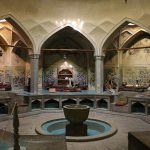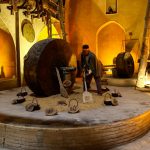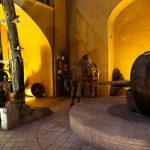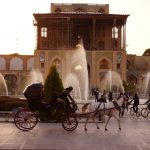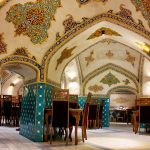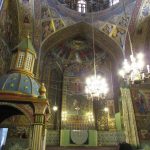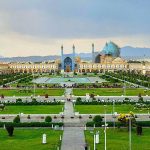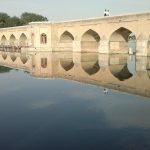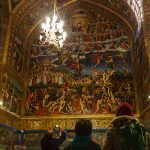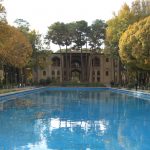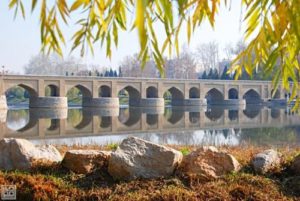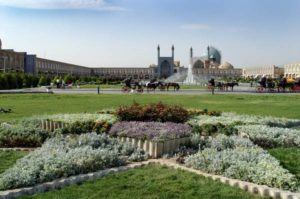ISFAHAN
ISFAHAN HISTORY
About Isfahan
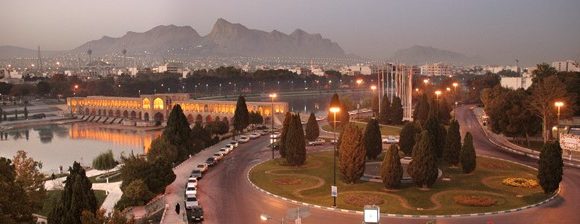
Among the cities of Iran, Isfahan is like a piece of jewelry that despite the historical fluctuations in the area has still retained its luster and glory throughout the centuries. The city is so vibrant that it seems as if it has been born today and yet it is so original that it looks as though it has always existed. The city’s rich culture and beautiful nature are in such perfect harmony that one seems to be a reflection of the other. Isfahan is an ultimate expression of the Iranian-Islamic Culture.
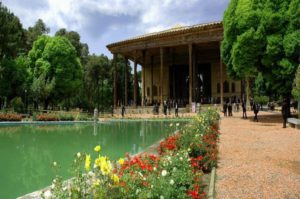
Isfahan: The City of Four Seasons
Isfahan is located in the central Iran inside the plains stretching along Zayandeh Rood River. The city is located in a relatively mountainous area in the center of the Iranian Plateau and stretches from the snowy Zagros Mountains in the West to the East and North-central deserts of Iran. There exists a variety of climatic conditions in the city thanks to regions with different altitudes.
Generally, as the altitude falls from Western city to the Eastern, the area temperature increases together with the decrease in the amount of rainfall. There is a breeze drifting in the city throughout the four seasons. The Western and Southwestern winds which blow along Zayandeh Rood River in the spring and fall endow the city with a glorious weather. Isfahan is a city with regular seasonal changes. Spring begins in late March with the trees in full bloom, summer in late June. The city greets fall color in late September with the leaves falling off the trees and winter starts in late December. Among all the seasons and months, Isfahan is in its perfect splendor in May. It’s the month when a breeze from the sky drifts through the colorful city in possession of a pleasant weather and luring lights. Isfahan is dowered with a full sunlight and is sunny three fourth of a year.
Isfahan: A Museum Where People Live
With its old history and numerous monuments, Isfahan is an exemplary city in the world. According to the French author, Andre Malraux, only Florence and Peking are comparable to Isfahan. The historical monuments of Isfahan comprise a collection of the finest examples of the various styles of Persian architecture developed throughout a period of thousand years and more. The quality and quantity of these works of art are great and they are masterpieces of the post-Islamic Iranian architecture .Among the historical attractions of Isfahan various types of domes, tile works, plaster works, frescos wall paintings and calligraphies can be named. These works reveal the religious beliefs of their creators and fascinate the visitors so greatly that they feel as though they have been taken back to the ages of the artists and find themselves in a world replete with light and elegance.
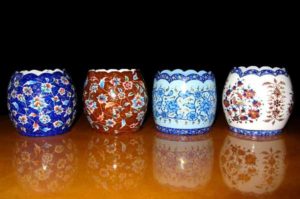
Isfahan: A World of Art
Isfahan is called the city of Iranian handicraft and traditional arts. These works of art comprise a major portion of Iran’s exports, particularly to Europe. The contemporary traditional arts and handicrafts of Isfahan are in fact a continuance of the Safavid Art pursued by the modern Iran craftsmen. Their artistic works are appreciated by Iranians and non-Iranians alike, and play a pivotal role in exports from Isfahan. Carpet weaving, engraving, miniature painting, Moarragh, tile art, brocade, calico work and enamelwork are among the most prominent works of art in Isfahan. The contemporary artists of Isfahan have made new innovations in recent years in the areas of miniature painting, tile making and engraving. Isfahan also has an age-old musical tradition. Today, most Iranian musicians speak Persian with an Isfahani accent.
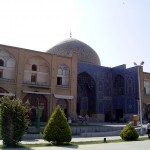
The Present Day Isfahan
Isfahan has achieved a significant growth and development in the past decades. It has turned into a modern city following an increase in its population, development of its urban area and formation of new streets as well as the rise in the number of buildings and plants. Isfahan has witnessed a dramatic growth after the Islamic Revolution. However it has never lost any of its character.
Weather
Isfahan has a dry continental climate with four distinct seasons. Summer months extending from June to August are hot and dry and winter months beginning from December and lasting to February are cold with sporadic snowfalls. Therefore, the best seasons to visit Isfahan are spring and fall when the weather is sunny, warm and pleasant for sightseeing and outdoor activities. Although there is extreme heat and cold in the city, the cold days do not last longer than three months. In Isfahan, it hardly ever snows in winter. There is usually rainfall in March and April, probably because of the clouds made from the evaporation of the thawing snow. A wind coming from the west keeps blowing throughout the summer. When the sun sets, the wind picks up and it gets so cold at night that one might want to wear a woolen coat. Spring starts in February when the weather becomes balmy and the city gets back its charm.
|
|
|
| -18(°C) | |
| Wind | (mph) |
| Pressure | (in) |
| Visibility | (mi) |
| UV Index | - |
| Humidity | (in) |




